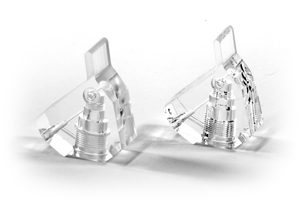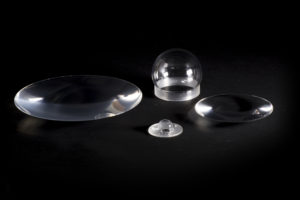
After CNC machining plastics, the result can have a dull like aesthetic appearance, inside and outside of the parts. A key reason for using transparent or semi-transparent plastics, is to have highly polished surfaces or visible internal features, therefore additional polishing processes are required. Carville have many years’ experience of polishing various plastics, especially Acrylic (PMMA), Polycarbonate (PC) and Ultem (PEI) to produce visually stunning parts. Plastics polishing techniques include vapor polishing, mop polishing and hand finishing. With these plastic polishing processes, we can produce parts such as optically clear fluid manifolds, optical lenses and highly polished plastics parts that require clarity for camera vision or other imaging techniques such as spectroscopy.
What is Vapour Polishing?
Vapour polishing is a specialist method of polishing plastics to reduce the surface roughness and improve optical clarity. The component is exposed to a chemical in vapor form causing the surface to flow slightly thereby improving the surface finish. This method of polishing is frequently used to return clear plastic materials to an optical quality finish after precision CNC machining.

Vapor polishing can be used to enhance component features on materials such as Acrylic (PMMA), Polycarbonate or Ultem (PEI). Vapor polishing is ideally suited to the polishing of small features and offers improvements to internal and external surface finishes. It has the advantage of being able to polish internal, detailed features such as threads, apertures, channels and sample inspection areas that would be impossible with manual polishing. Super finishing is a term used to describe Carville’s unique vapour polishing process. lenses and light guides.
Manual & Mop Polishing
Acrylic and other engineering plastics can be mop polished to improve the surface finish / roughness and appearance. Polishing requires the removal of material, and it is therefore essential to achieve a good CNC machined finish prior to polishing to ensure critical dimensions can be maintained often using diamond-based tools.
Mop polishing requires different grades of mops or clothes used in conjunction with abrasive soaps and polishes which remove surface material and leave high quality polished finish on Acrylic and other plastics to achieve a glass like finish. The type of mop polishing process will be subject to the quantity and shape of parts. For lower quantities and complex shapes, mop polishing will be a manual process with each part individually finished by hand, but for higher quantities, Carville often use automated instruments and processes. Plastic surface finishes of Ra 0.03 can be achieved with Mop polishing, A good surface finish starts with careful selection of machine tooling, heat treatment, diamond milling, machining methods and preparation processes, to produce a part with minimal witness marks in critical areas. (See page Page 4 of Carville’s product brochure for a comparison of 5 Acrylic plastic components, dimensionally identical but produced using a combination of different machining and polishing techniques).
The final plastics polishing technique that Carville use is hand polishing using specialist pastes and tools, used when specific features or surfaces of a part require a very high level of finish. This is typically either an optical feature, or an area where fluid adhesion is to be minimised such as dispensing applications or blood contact surfaces.



